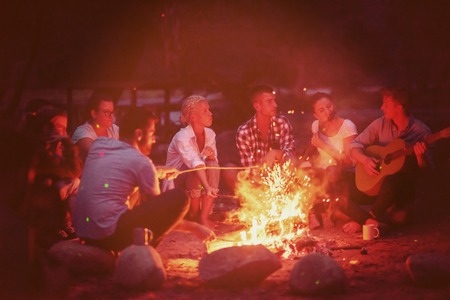Understanding the British Climate and Terrain
When it comes to camping in the UK, understanding the distinctive climate and terrain is essential for a successful adventure. The British Isles are famous for their unpredictable weather—one moment you’re basking in sunshine, and the next, you’re dashing to shelter from a sudden downpour. Rain is a frequent companion, especially in regions like the Lake District, Scotland, or Wales, where misty mornings and damp afternoons are par for the course. Coastal winds can sweep across open fields with little warning, while dense woodlands can harbour chill even in summer. The landscape itself varies dramatically: rolling hills, boggy moorlands, ancient forests, and rugged coastlines all present their own set of challenges. These unique conditions have shaped traditional British campfire customs and camping etiquette. Staying warm and dry is not just about comfort—it’s about adapting your gear, shelter choices, and fire-building techniques to cope with sodden ground and persistent drizzle. Knowing how the weather might turn at any moment helps campers prepare layers of waterproofs, sturdy boots, and tarps for both themselves and their kit. Ultimately, British camping culture is built on respect for the elements and an appreciation for the ever-changing beauty of the land.
Choosing Your Campsite Wisely
If you want to master the art of British campfire customs, choosing your campsite is half the battle. The UK’s famously fickle weather and varied landscapes make it essential to select a dry and sheltered spot. Traditional countryside wisdom has always emphasised the importance of location, especially if you want to stay warm and dry throughout your camping adventure.
Key Considerations for a Dry and Sheltered Spot
Start by looking for natural shelter. Hedgerows, small woodland copses, or the lee side of gentle hills are classic choices in the British countryside. Avoid low-lying ground where cold air and moisture settle overnight, and steer clear of obvious drainage channels or flood-prone areas. The prevailing winds in Britain tend to come from the southwest, so positioning your tent with its back to these winds – using trees or shrubbery as windbreaks – can make a world of difference.
Traditional Tips from Seasoned Campers
| Tip | Explanation |
|---|---|
| Look for moss on trees | Moss usually grows on the damper, northern side; avoid pitching right here to reduce dampness underfoot. |
| Avoid sheep tracks | These often indicate well-trodden, compacted (and sometimes boggy) ground. |
| Check for anthills and rabbit holes | Uneven ground makes for an uncomfortable night – and you’ll stay drier on a flat pitch. |
| Use bracken or ferns as extra insulation | Traditional campers sometimes lay bracken between groundsheet and earth to insulate against cold and damp. |
Sizing Up Shelter: Natural vs Manmade
If you’re wild camping, use existing features like dry stone walls or dense gorse bushes to block wind. On managed sites, choose pitches with established hedges or tree lines. Remember that while trees offer shelter, avoid pitching directly beneath old branches to reduce risk from falling limbs in blustery weather—a tip passed down by generations of British ramblers.
![]()
3. Building a Proper British Campfire
In the UK, campfire customs have evolved to meet the challenges of damp weather and unique local environments. When constructing your fire, always consider both tradition and safety. First, choose a sheltered spot that’s well away from tents, overhanging branches, or dry grass. The British countryside is often wet, so opt for raised fire pits or dig a shallow pit with a stone border to keep water out and heat in. It’s common practice to use local hardwoods like oak or ash—these burn longer and hotter than imported softwoods and are less likely to spit embers. If the ground is sodden, lay down a base of thick sticks or stones before building your fire; this keeps your fuel off the wet earth and improves airflow.
Gather kindling from the area, such as small twigs, birch bark, or even dried bracken—always ensuring you’re not disturbing local wildlife habitats or taking wood from protected areas. Many seasoned UK campers carry a stash of dry kindling in waterproof bags for emergencies. When lighting the fire, traditionalists favour flint and steel over matches or lighters, but practicality often wins out in typical British drizzle—a windproof lighter can be indispensable.
Safety is paramount in British camping culture. Always have water or a bucket of soil nearby to extinguish your fire fully when you’re done—leaving no trace is both polite and required by most landowners. Familiarise yourself with local regulations: on some commons or national parks, open fires may be restricted or banned entirely due to conservation efforts. By following these customs and precautions, you’ll enjoy warmth and camaraderie around your campfire while respecting the British landscape.
4. Traditional Methods to Keep Warm
When it comes to classic British camping, staying warm is as much about tradition as it is about practicality. The unpredictable weather of the British Isles means campers have long relied on tried-and-tested methods and gear to keep the chill at bay. Here’s a look at some staple techniques and essential kit you’ll find around any proper British campfire.
Classic British Warming Techniques
- Wool Blankets: A true icon of British camping, wool blankets are prized for their warmth even when damp. Unlike synthetic materials, wool naturally insulates and is fire-resistant—perfect for huddling near the campfire.
- Layering Up: The art of layering clothing isn’t just sensible—it’s practically a rite of passage for anyone who has braved a weekend in Snowdonia or the Lake District. Start with a moisture-wicking base, add an insulating mid-layer, and top with a windproof outer shell.
- Hot Water Bottles: Nothing beats slipping a hot water bottle into your sleeping bag on a cold night. It’s an old-school hack that never goes out of fashion in UK campsites.
Clever DIY Windbreaks
The persistent British breeze can quickly sap your warmth, so resourceful campers use natural features and simple DIY windbreaks to shield their site. Here are some common options:
| Windbreak Method | Description | Best For |
|---|---|---|
| Bushcraft Barriers | Stacking fallen branches or foliage to block the wind directionally | Woodland campsites |
| Tarp Setups | Suspending tarpaulin between trees or poles to create a makeshift wall | Open fields, coastal areas |
| Tent Positioning | Pitching tents behind natural land features like hedges or hillsides | Exposed moorlands or fells |
More Traditional Kit Worth Packing
- Enamel Mugs: For warming up with tea by the fire—another essential British ritual.
- Kilts and Tweed: In some regions, particularly Scotland, traditional garments provide not only heritage but surprising warmth.
- Candles and Lanterns: Besides giving light, they add a touch of heat to enclosed shelters.
Final Thoughts on Keeping Toasty the British Way
The key to comfort while camping in Britain lies in embracing both modern know-how and time-honoured customs. Whether it’s wrapping up in a trusty wool blanket, crafting a windbreak from whatever’s at hand, or simply brewing up another cuppa, these methods ensure you can enjoy the outdoors whatever the weather decides to do next.
5. Staying Dry: Gear and Clothing
When it comes to British camping, staying dry is a non-negotiable skill. The UK’s famously unpredictable weather means even the clearest morning can turn into a soggy afternoon. To master campfire customs and enjoy the wilds comfortably, savvy campers rely on tried-and-tested kit choices. First and foremost, invest in a proper waterproof jacket—look for something with a high hydrostatic head rating (at least 10,000mm) and fully taped seams. Brands like Berghaus, Rab, and Montane are popular picks among British outdoor enthusiasts for their reliability in wet conditions.
Waterproof Trousers
No one enjoys sitting around a campfire in damp jeans. Pack lightweight, breathable overtrousers that can be easily pulled on when the rain starts. Features such as side zips for quick changes and adjustable cuffs to fit over boots are invaluable on muddy British campsites.
Boots That Mean Business
Footwear is equally crucial. A sturdy pair of waterproof walking boots—think Gore-Tex lining or similar membrane—is essential to keep your feet warm and dry during woodland rambles and trips to collect firewood. Look for Vibram soles for grip on slick ground, and remember that wellies are excellent for especially boggy spots but may lack support for long hikes.
Kit Essentials: Dry Bags & Covers
Protecting your gear matters as much as looking after yourself. Dry bags are indispensable for keeping spare clothes and electronics safe from downpours. Many British campers also bring rucksack rain covers and pack liners—a small investment that pays off when everything else is soaked through. Lastly, always have a microfibre towel handy; they’re quick-drying and compact, perfect for wiping off wet benches before settling by the fire.
The key takeaway? In Britain, there’s no such thing as bad weather—just the wrong gear. With the right clothing and kit, you’ll stay warm by the campfire and dry enough to enjoy every moment outdoors.
6. Campfire Etiquette and Community
While the British countryside welcomes all, there’s a unique sense of camaraderie and subtle etiquette that comes alive around the campfire. Understanding these unspoken customs can turn a chilly evening into a memorable social experience.
Kettle-Sharing: A British Tradition
If there’s one thing that unites British campers, it’s the love of a good cuppa. Offering to share your kettle or brew tea for others is more than simple hospitality—it’s an invitation to conversation and warmth. Don’t hesitate to ask if anyone fancies a brew; you’ll likely spark new friendships.
Respecting Quiet Hours
The countryside holds a special kind of peace, especially after dusk. Keep voices low and music to a minimum as the evening settles in. Many campsites have designated quiet hours—respecting these ensures everyone enjoys their rest, from seasoned hikers to families with children.
Leave No Trace
British campers take pride in leaving their pitch as pristine as they found it. This means tidying up every bit of litter, dispersing leftover ashes responsibly, and ensuring no trace remains of your fire ring unless permitted by site rules. Always follow local guidance and use provided facilities where possible.
Wildlife Awareness
Respect for nature runs deep in British camping culture. Avoid feeding wildlife or leaving food scraps out—this protects both animals and future campers. Observe local species quietly, keeping torches dim to minimise disturbance.
Inclusivity Around the Fire
The glow of a campfire draws people together. Make space for newcomers on log benches, welcome solo campers to join in, and listen as stories are shared from across the UK and beyond. Remember: around the fire, everyone is part of the community—even if only for one night.


